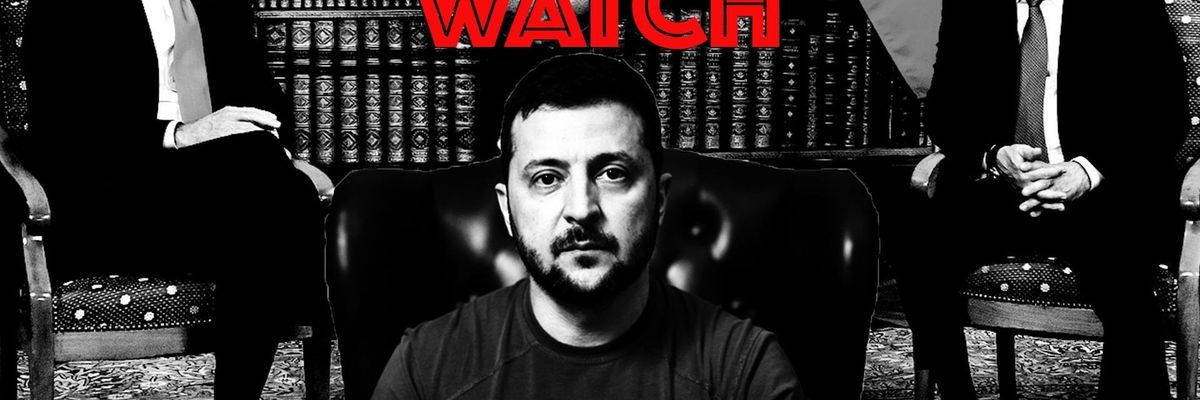China’s Ukraine peace envoy met with American officials in Jeddah, Saudi Arabia, over the weekend amid a summit aimed at building an international consensus on how to end the war in Ukraine, according to the State Department.
Chinese diplomat Li Hui, who previously served as ambassador to Russia, met with acting Deputy Secretary of State Victoria Nuland in a rare, high-level U.S.-China meeting on the sidelines of the summit, which did not include any Russian representatives. China’s participation in the weekend’s meetings earned equally rare (if limited) praise from U.S. officials.
“We do believe it was productive that China attended,” State Department spokesperson Matthew Miller said Monday. “It would be productive for China to play a role here, again, if that role respects Ukraine’s territorial integrity and its sovereignty.”
Li’s team “appeared constructive” and “keen to show that [it] is not Russia” throughout the weekend of talks, according to an unnamed European diplomat who spoke with the Financial Times.
China’s foreign ministry played down the differences between Chinese and Russian foreign policy following a Monday call between each country’s foreign minister. Beijing’s readout of the discussion reiterated its commitment to “uphold an independent and impartial stance” on the war while encouraging peace talks.
Russia, for its part, said the summit was “doomed to fail,” while Ukraine argued that the event dealt a “huge blow” to the Kremlin. The only concrete outcome was an agreement to meet again within the next six weeks, but Kyiv and its backers hope the meetings will help build support for Ukraine’s 10-point peace plan.
Russia asked its partners in BRICS — a grouping that also includes Brazil, India, China and South Africa — to share their evaluation of the talks, according to Moscow’s foreign ministry.
These “fence-sitting” countries have avoided taking a distinct side in the conflict, providing opportunities to act as go-betweens for the warring parties. As Happymon Jacob recently argued in Foreign Affairs, states like India are now well-positioned to “help limit and blunt the devastation of the war and its knock-on effects for the global economy.”
“Initiatives backed by Western countries that are Ukraine’s close allies and supporters or by Russia’s benefactor China will inevitably be greeted with suspicion,” Jacob wrote. “India has a unique opportunity to get involved precisely because it has not condemned Russia and continues to maintain ties with Moscow.”
India’s next big opportunity to push for peace talks will come early next month, when world leaders are set to gather in New Delhi for the G-20 Leaders’ Summit. Russian President Vladimir Putin is reportedly considering attending the meeting in person after skipping last year’s event. If Putin does come to New Delhi, it will be the first time that he and U.S. President Joe Biden will have been in a room together since before Russia’s invasion of Ukraine.
In other diplomatic news related to the war in Ukraine:
— Fallout from Russia’s decision to pull out of the Black Sea grain deal continued this week as Ukraine attacked a Russian tanker and declared Russian ports in the region a “war risk area,” according to Politico. “Everything the Russians are moving back and forth on the Black Sea are our valid military targets,” said Oleg Ustenko, an adviser to Ukrainian President Volodymyr Zelensky. The news, which threatens to paralyze Russian shipping in the region, came after weeks of Russian attacks on Ukrainian shipping infrastructure. Ukraine’s strong stance could raise concerns from Europe, which imported 32 million barrels of crude oil from Russia via the Black Sea last month.
— Brazilian President Luiz Inacio Lula da Silva told reporters last week that, while he still hopes to help negotiate peace in Ukraine, he doesn’t see an opportunity for talks in the near future, according to the New York Times. “For the time being, both of them are in that phase that ‘I will win, I will win, I will win,’” Lula said. Celso Amorim — Lula’s top foreign policy adviser and informal peace envoy — remotely attended the Jeddah meetings over the weekend.
— Poland plans to send upwards of 10,000 soldiers to bolster its border with Belarus amid claims that members of the Wagner Group — now based in Belarus following an abortive mutiny in Russia — could attempt to sneak across the frontier to stage attacks, according to the New York Times. Meanwhile, diplomatic tensions continued to rise between Poland and Ukraine due in part to a dramatic increase in Polish imports of Ukrainian foodstuffs, which farmers say has driven down prices and hurt their bottom line. The spat heated up last week when a top official in Warsaw chided Kyiv for not “appreciating the role Poland has played for Ukraine in recent months and years.” Ukraine then summoned Poland’s ambassador over the comments, a move that drew sharp criticism from Polish Prime Minister Mateusz Morawiecki. “Given the enormity of the support Poland has given Ukraine, such mistakes should not happen,” Morawiecki said.
— It is “extremely, highly unlikely” that Ukraine will make significant progress in its counteroffensive, according to an anonymous “senior western diplomat” who spoke with CNN. The diplomat’s dismal prediction comes amid growing fears that the war will remain a bloody stalemate for the foreseeable future.
U.S. State Department news:
In a Tuesday press conference, State Department spokesperson Matthew Miller suggested that the U.S. is not opposed to Russian President Vladimir Putin visiting Turkey so long as such a move could help revive the Black Sea grain deal. Turkish officials “continue to play a productive role” in efforts to revive the agreement, Miller said. “We think it’s useful that they play that role. I don’t have any comment on a potential visit other than we do support Türkiye continuing to press Russia to re-enter that initiative because it’s so important.”
















